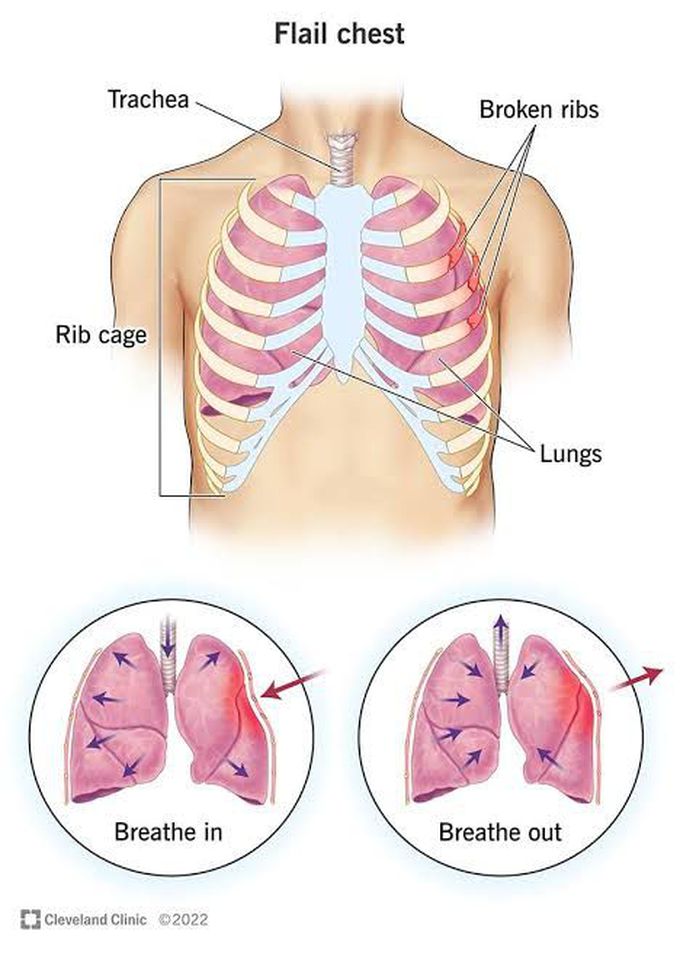


Flail chest management
Chest X-rays are also likely to show bruises to your lung. Your provider may also touch (palpate) you and be able to feel that you have broken ribs. MANAGEMENT AND TREATMENT How is flail chest treated? At first, you’ll get oxygen and be monitored. You’ll be medicated for pain if you have flail chest to make sure the pain doesn’t interfere with your breathing. Your healthcare team will also perform pulmonary hygiene measures to keep your airways clear of secretions. Pain control You may receive intravenous (IV) medications, an epidural or intercostal pain blocks to relieve your pain. Your provider may combine approaches. Pulmonary hygiene Pulmonary hygiene is a term used for exercises and procedures that keep your lungs clear of secretions. Your providers will work to keep you from developing pneumonia, which is the main complication of flail chest. Pulmonary hygiene is also known as pulmonary toilet or chest physiotherapy and may include: Suctioning to remove secretions from your airways. Incentive spirometry to help you improve your breathing. Bronchodilator therapy, or medications that open your airways. Fluid monitoring. It’s important to have the right amount of fluid in your blood so your lungs work correctly. Proper positioning to improve breathing and lessen pain. Your provider may use continuous airway positive pressure (CPAP) or supplemental oxygen instead of mechanical ventilation to help you breathe. You may have to be on a ventilator to help you breathe until the trauma heals. You may have to have surgery to prevent complications such as pneumonia, very long hospital stays or even death. This surgery is known as surgical rib fixation. There are various types of implanted devices used to keep your ribs stable. After you begin recovering, you’ll still need to follow some suggestions for pulmonary hygiene. This may include breathing exercises such as pursed lip breathing and diaphragmatic (belly) breathing, along with ways of positioning your body.

